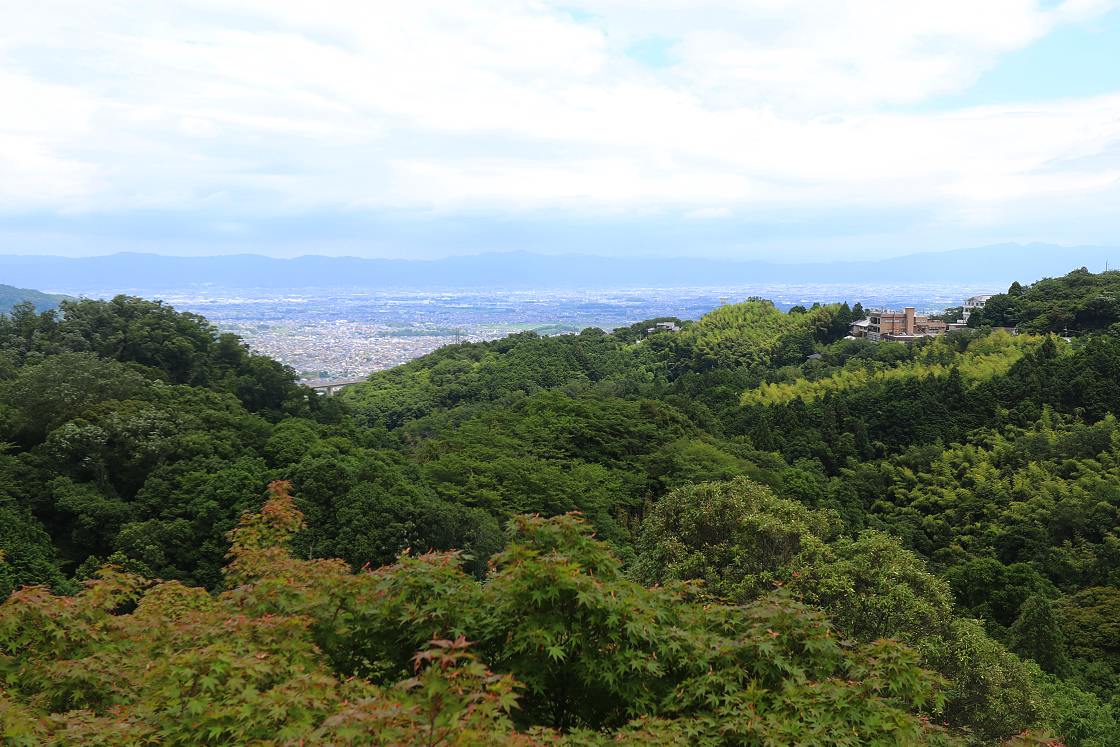Whether you’re a first time visitor or already a seasoned traveler with multiple Japan trips under your belt, the call of the overnight temple stay can be an alluring one, especially for those who pride themselves on seeking out the most authentic and immersive experiences. With visit numbers and the popularity of such experiences both at an all-time high however, you may be wondering just how far off the beaten track one needs to go for a peaceful stay in unspoilt surroundings.
For visitors to Japan’s Kansai Region, the answer may not be that far at all. Located on the remote mountain of Shigi-san in rural Nara Prefecture, the ancient temple complex of Chogosonshiji is a hidden gem with the perfect balance of atmosphere, warmth and – with Kintetsu’s Osaka Namba Station less than an hour away – easy accessibility.
One of Japan’s largest railways, Kintetsu Railway connects the cities of Osaka, Kyoto, Nara and Nagoya, as well as several other popular tourist destinations in the Kansai Region like Ise and Yoshino. For this video project, we set out to highlight this underseen and highly atmospheric spot on an easy overnight trip from central Osaka.
Starting at Osaka Namba Station in Osaka’s busy Minami District, I took three Kintetsu trains – a local, a suburban semi-express and another local – east across the Osaka Plain and into the Ikoma Mountains straddling the prefectural border. At Shigisanguchi Station, I changed to a cable car then a bus for the roughly half-hour journey to Shigisanmon, once the starting point of the temple precinct.
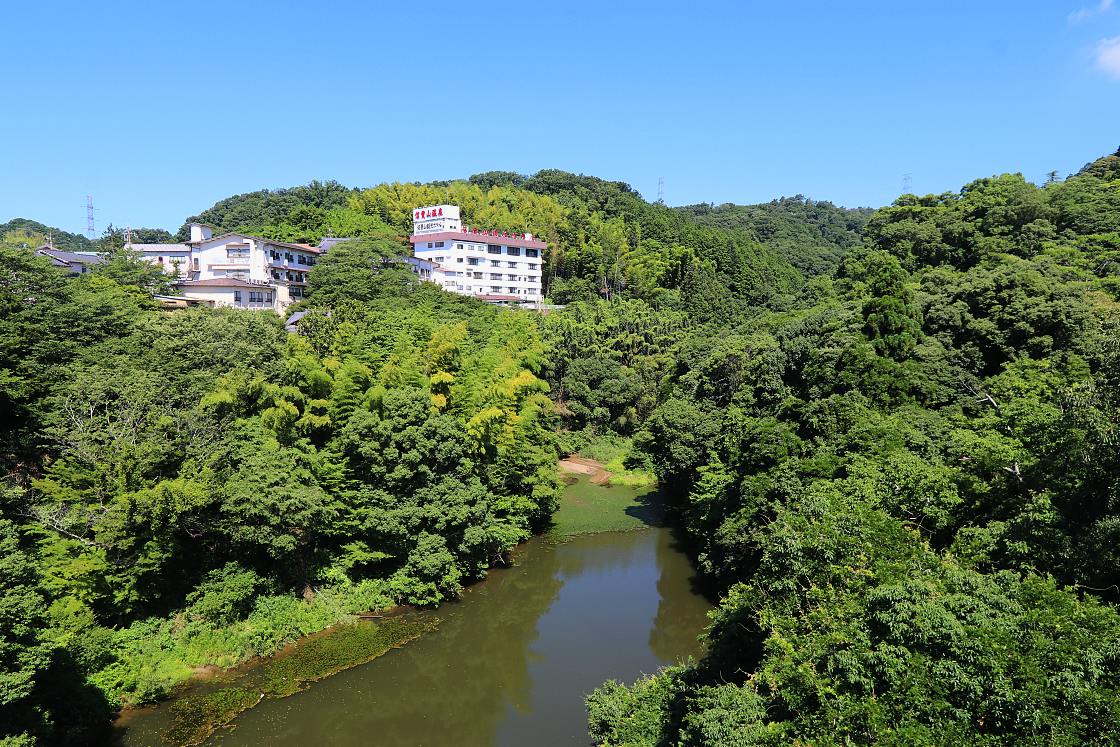
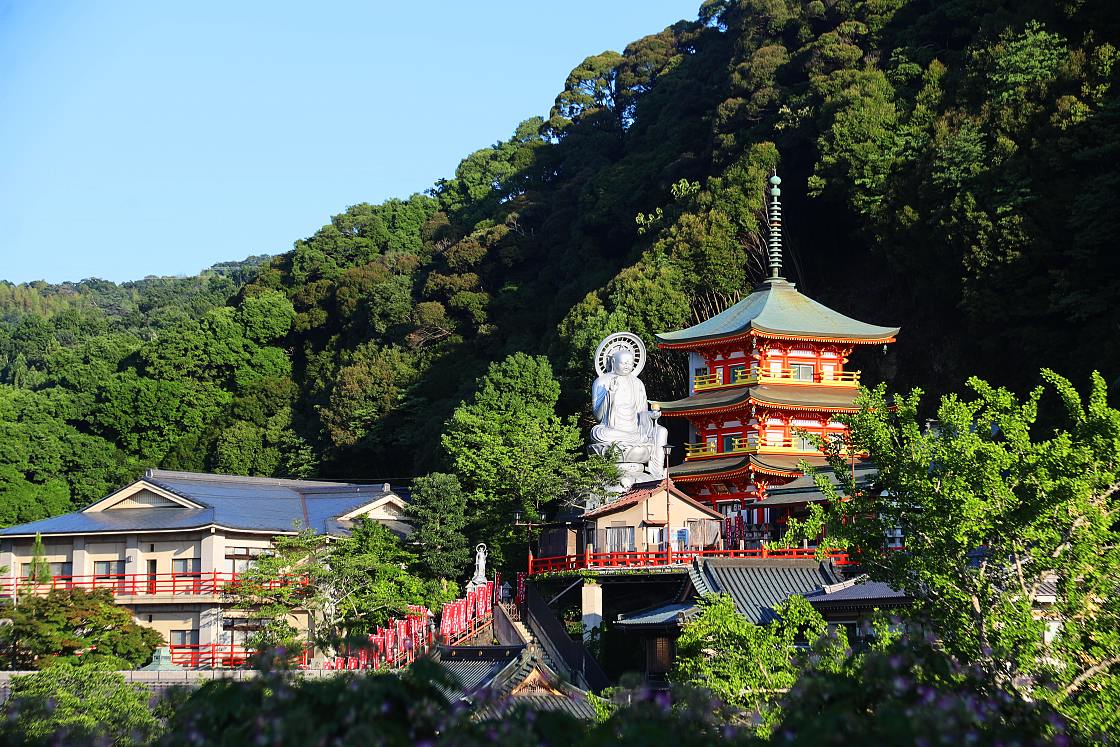
Crossing over the Daimon Lake at the foot of the mountain, I continued uphill along a winding path lined with stone lanterns into the temple complex proper. Just ahead of the Akamon or red gate, I arrived at the giant tiger statue known as Fukutora that is Shigisan’s protector and emblem.
The story of the temple can be traced back to the 6th century, when the near-legendary prince Shotoku Taishi is said to have prayed at the site before leading an army against the Mononobe – a rival faction implacably opposed to the spread of Buddhism. His prayers were answered with a vision from the Buddhist war deity Bishamonten – arriving at the year, day and hour of the tiger – and the prince was soon victorious.
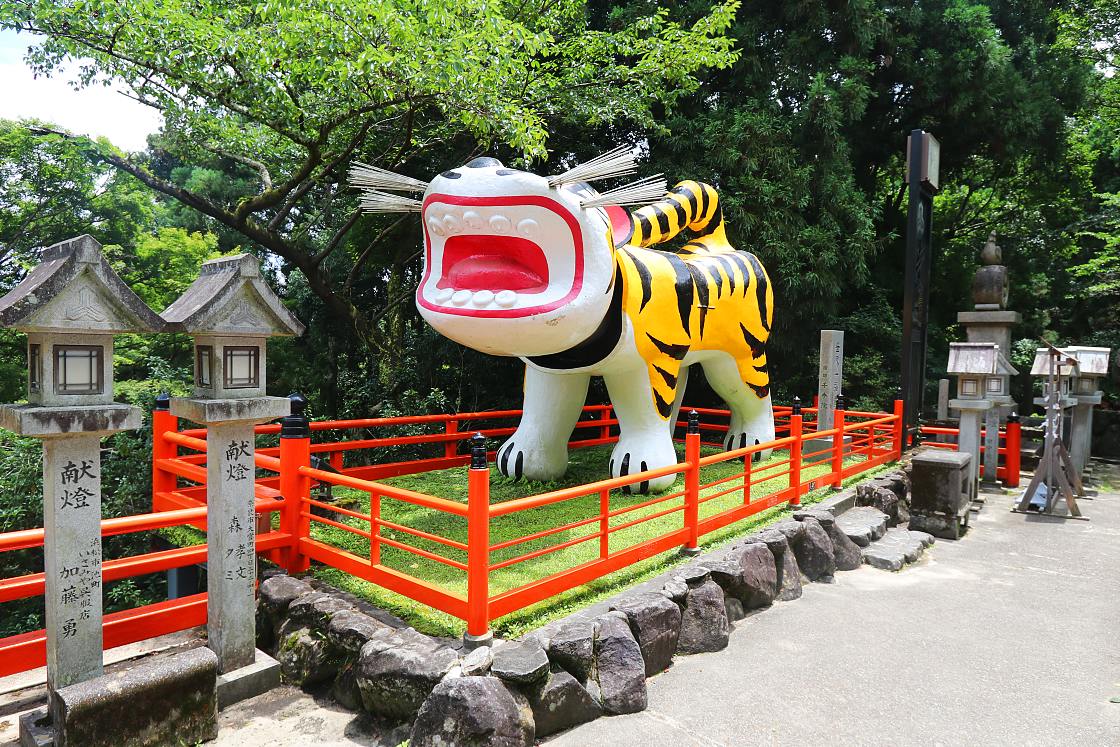
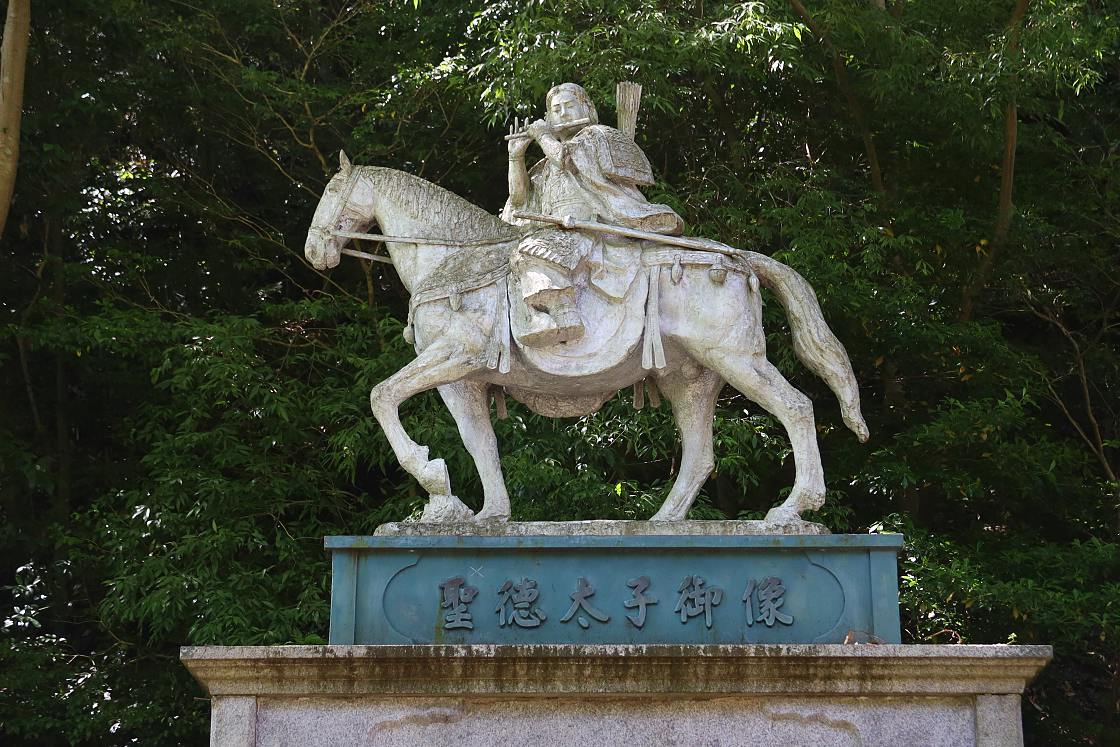
Stepping inside the gate, I found more interconnecting pathways with hundreds more of the elegant stone lanterns, three sub-temples – all of which offer overnight accommodation – as well as countless statues and separate temple buildings. It’s also possible to hike up to the mountaintop or along several wooded trails leading into the surrounding hills, although for me it was a little too hot and humid on the day of my visit.
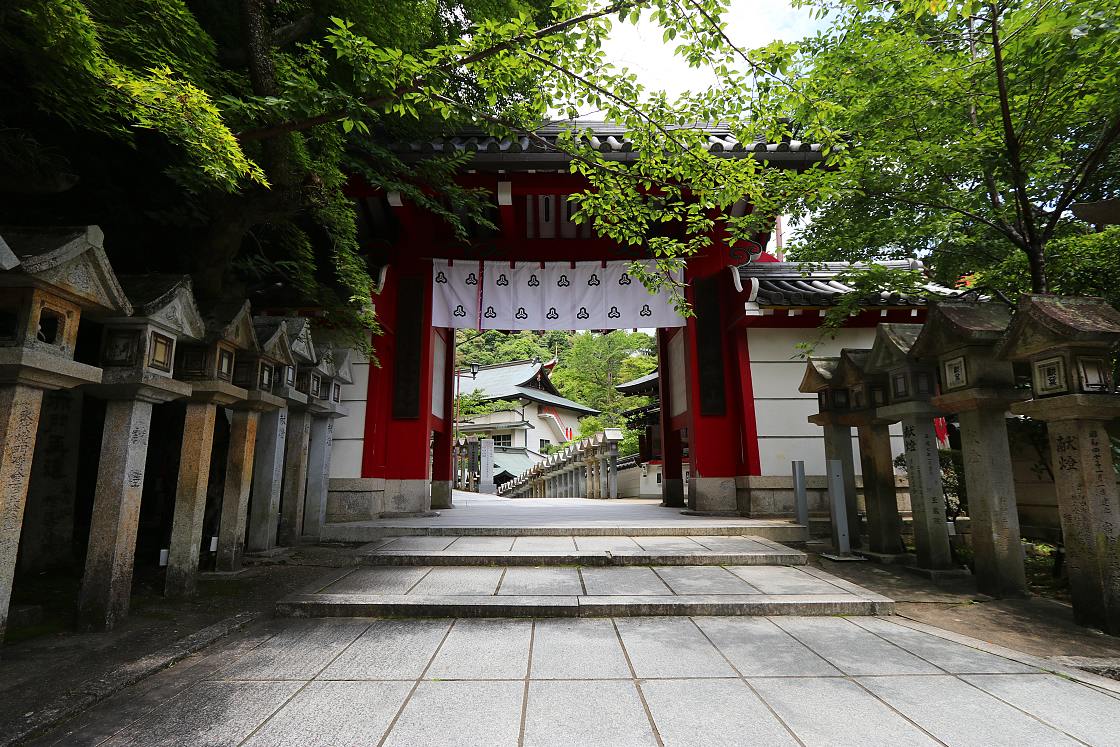
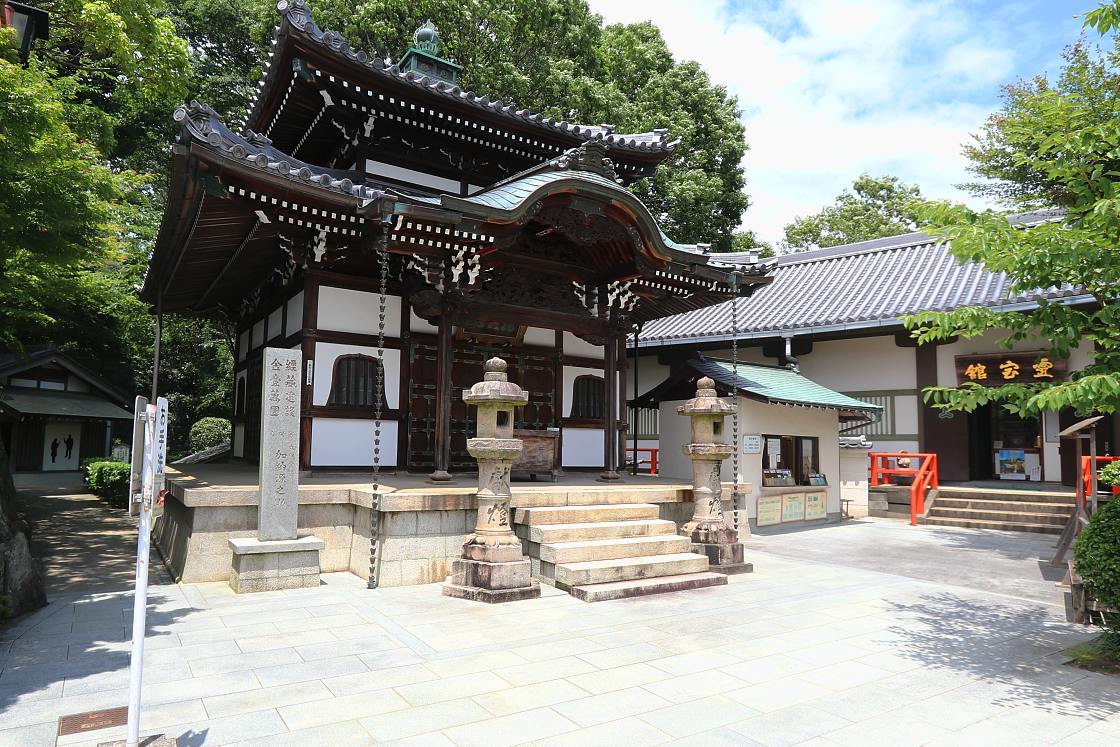
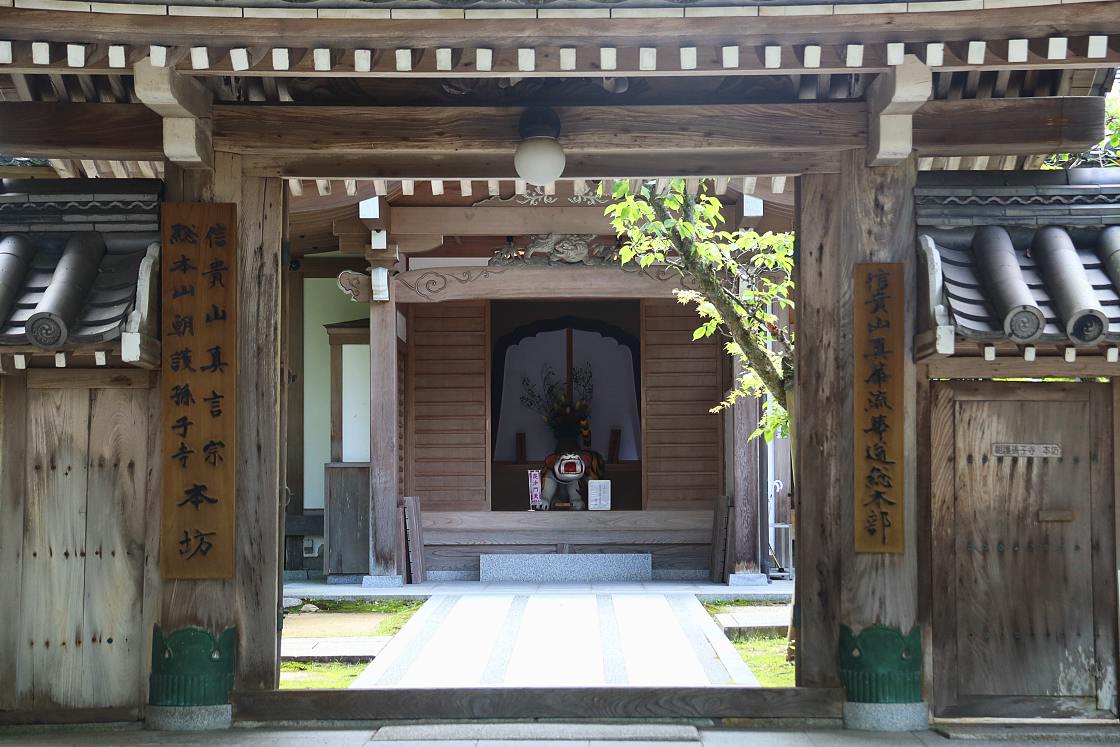
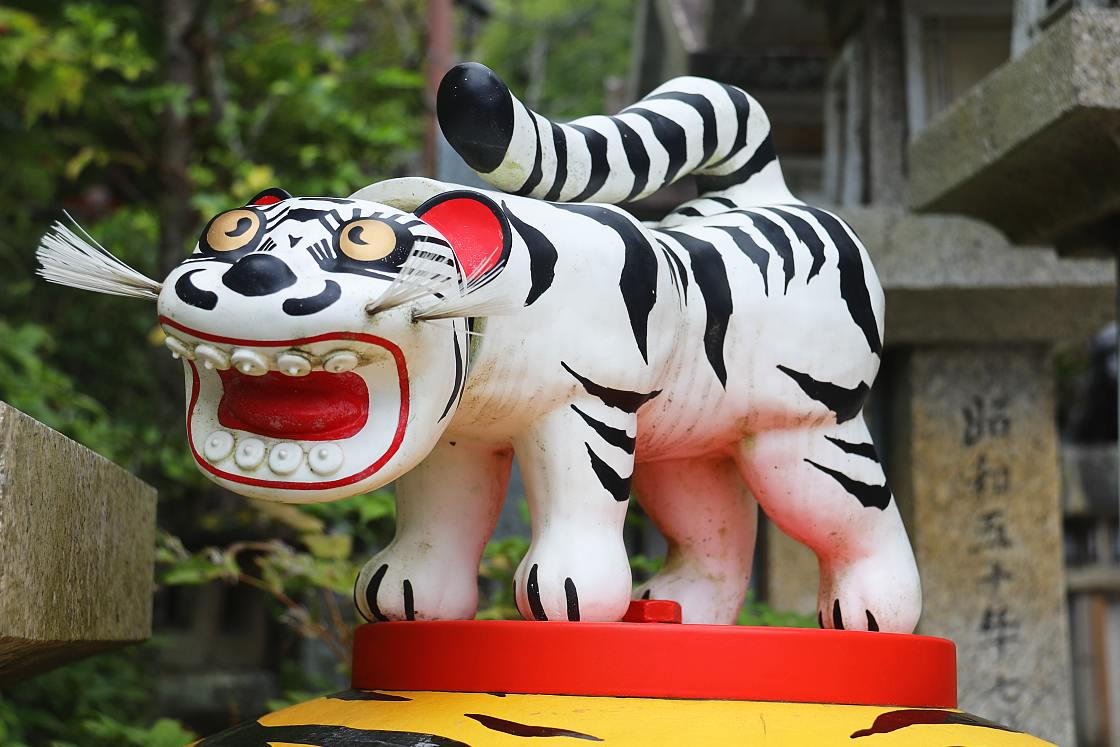
The temple’s main hall or hondo is said to have been rebuilt by Toyotomi Hideyori – son of the warlord Toyotomi Hideyoshi – in 1610, but today we can’t be quite sure. It’s built in a style known as butai-zukuri meaning like a stage, and offers some incredible views across the surrounding landscape. Just as I was admiring the scenery, a powerful chorus of chanting rose up from inside, as the priests offered up a unique prayer to Bishamonten known as Daihanyakito.
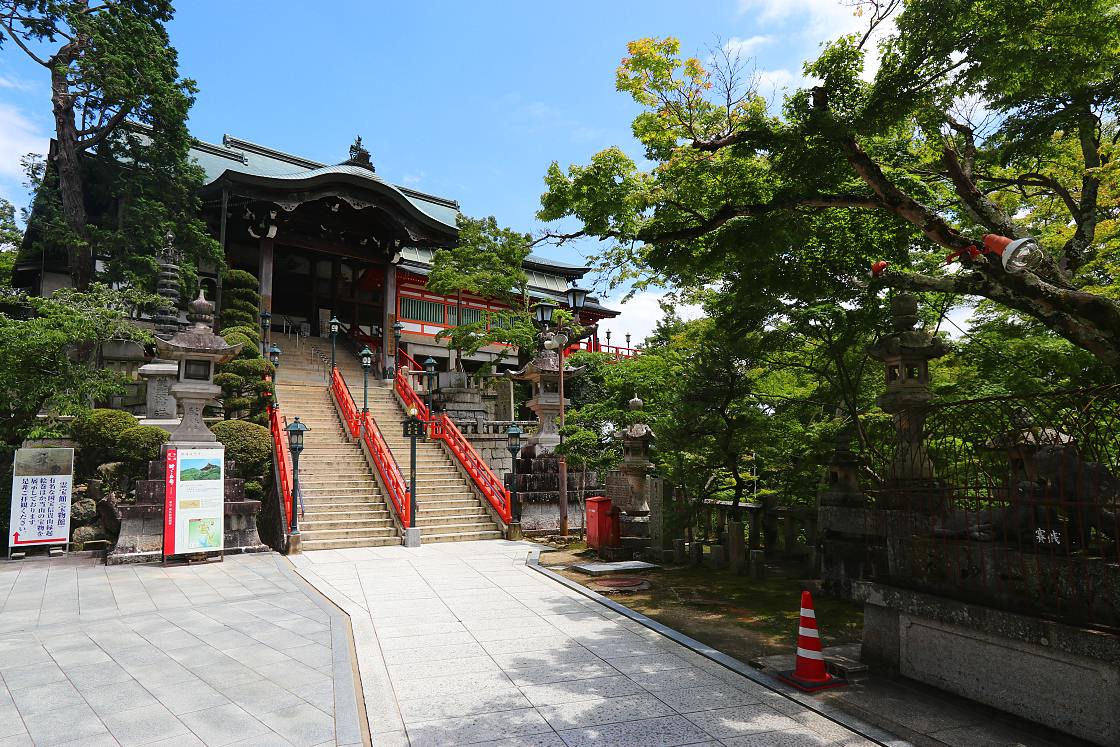
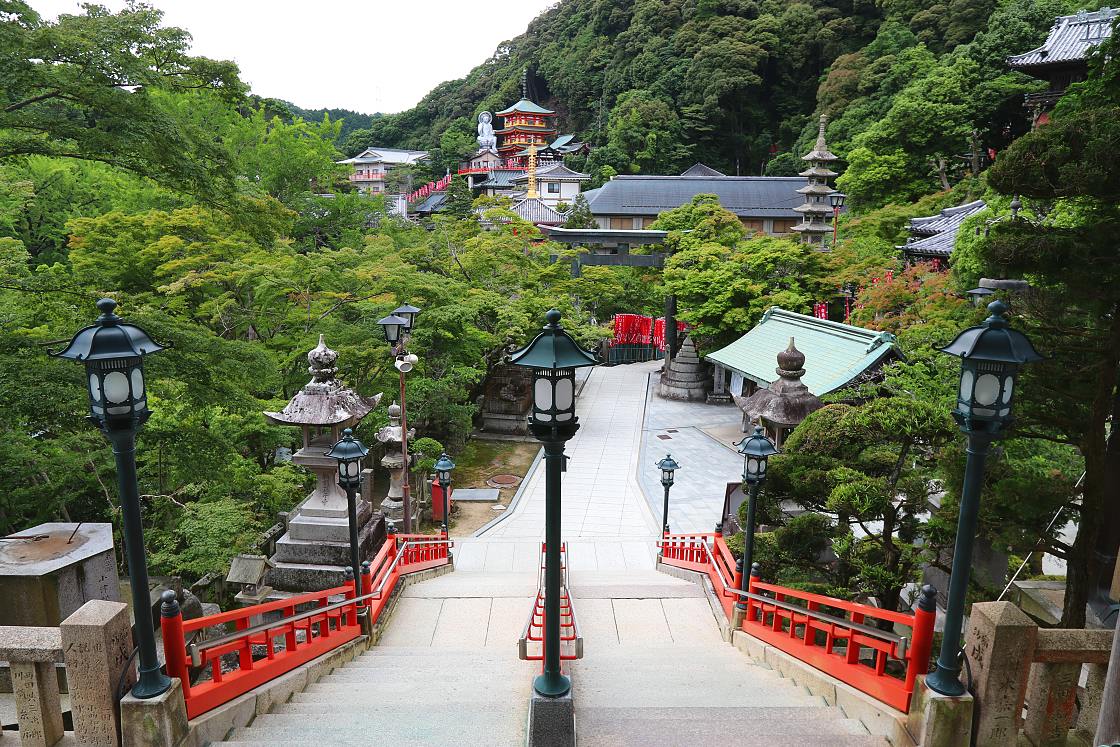
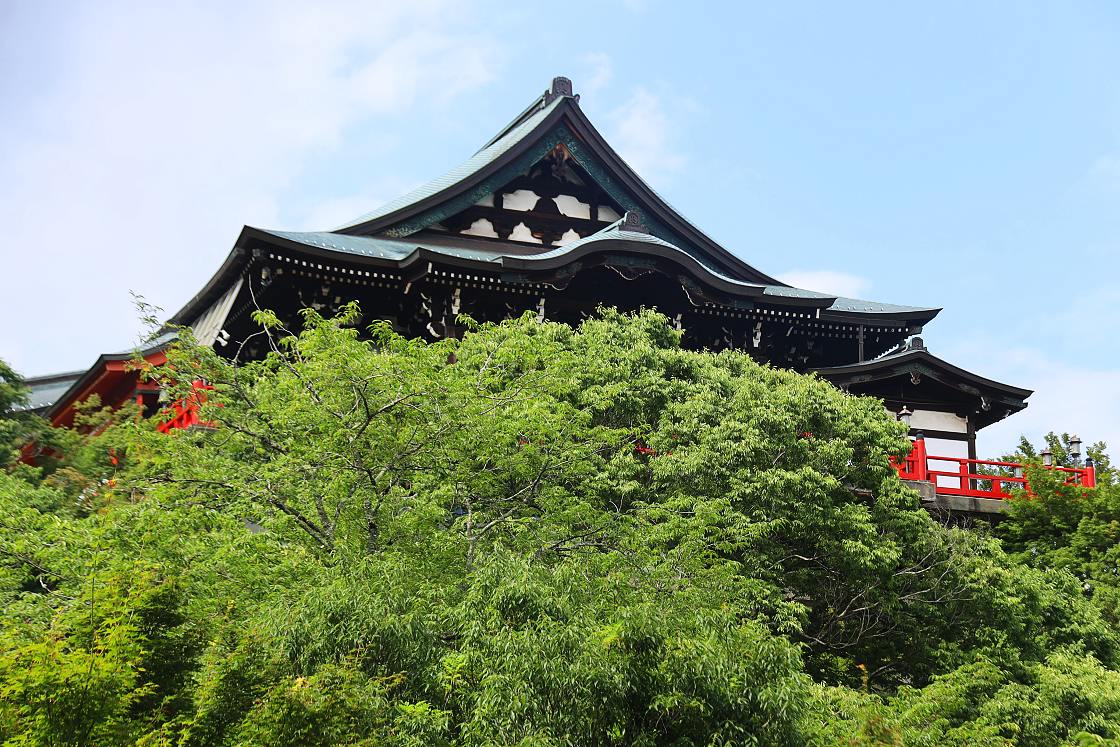
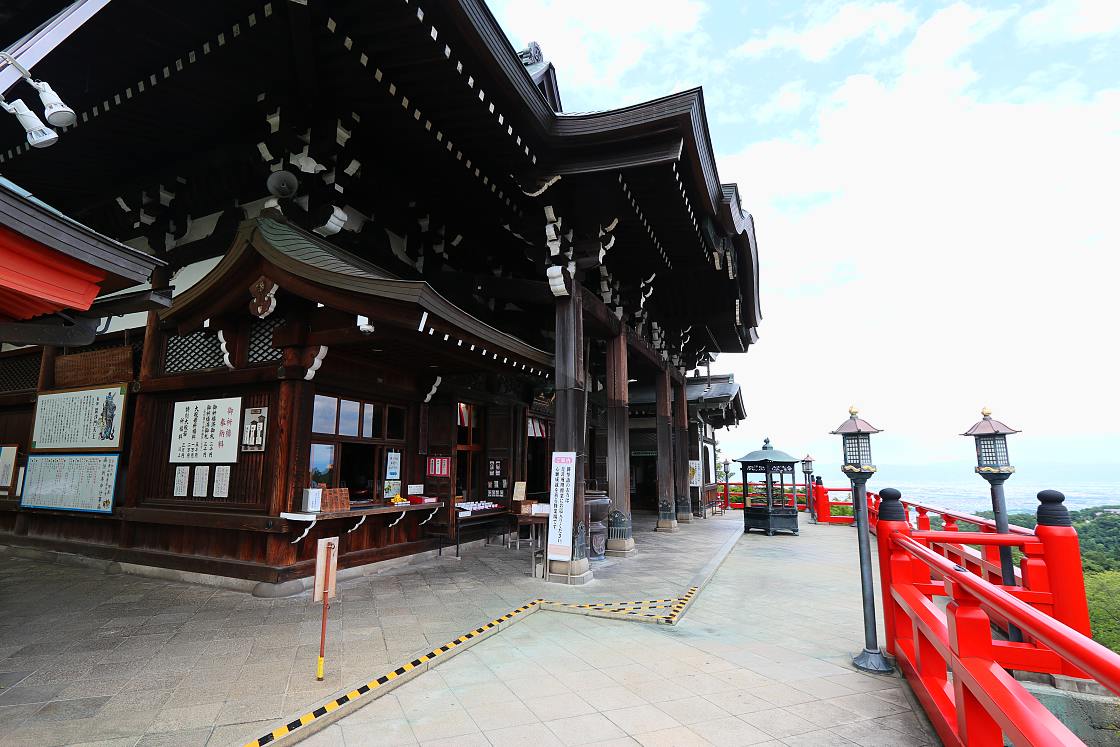
After taking some time to explore the grounds, I made my way over to the sub temple of Gyokuzoin where I would be spending the night. Once I was checked in, a priest led me through a maze of corridors to a quiet study room in a separate wing, where I would be taking part in a special shakyo or sutra copying exercise.
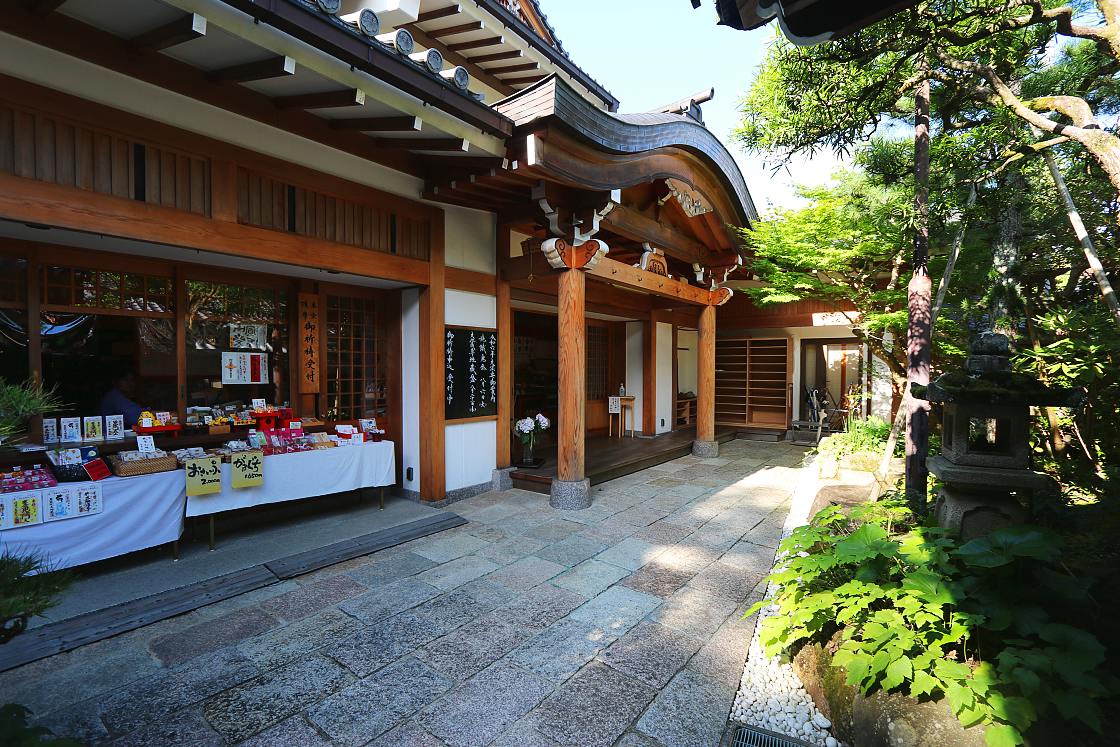
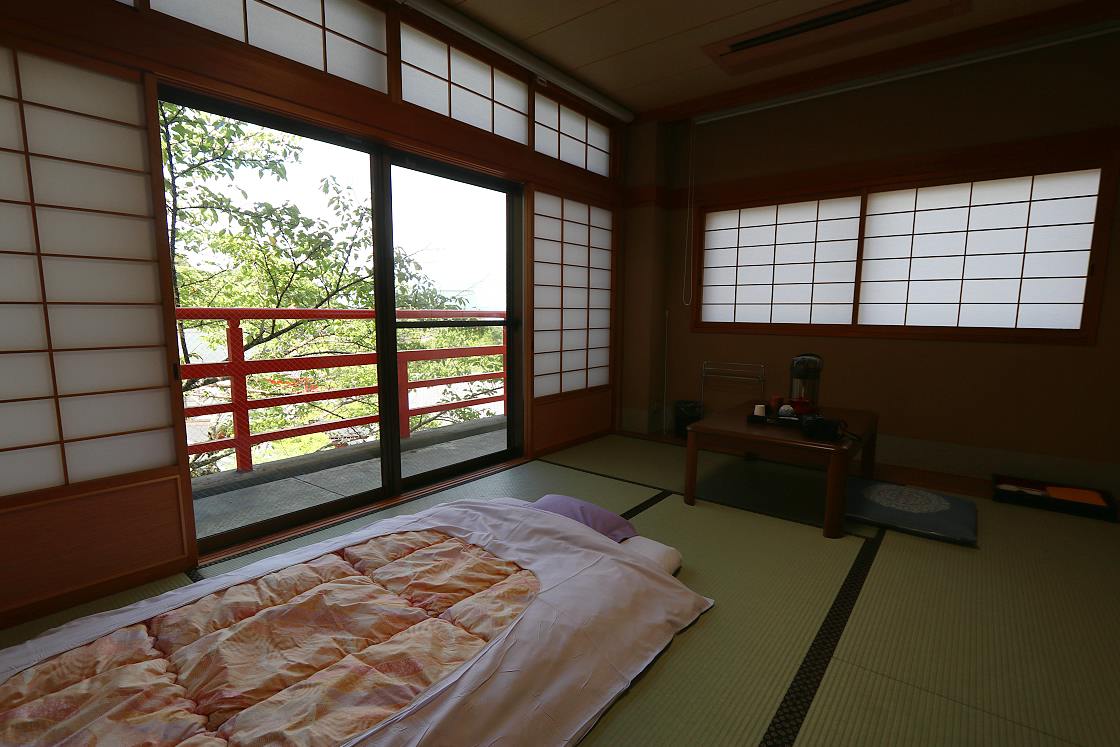
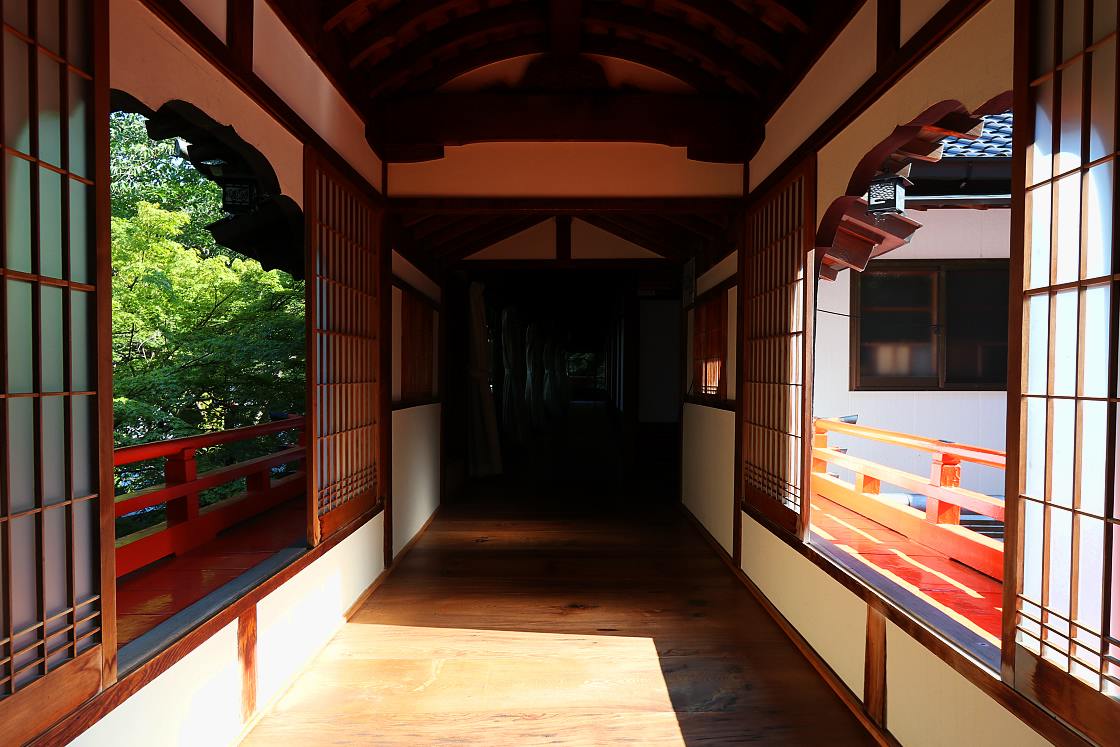
A common practise in Japan going all the way back to the Nara Period (710-794), the act of copying sutras is believed in many schools of Buddhism to bring merit to oneself and others, comprising a form of prayer, meditation and right action in the form of careful calligraphy.
Fortunately – all I had to copy was a single sheet, with a faint outline creating a guide for me to follow. Even this proved surprisingly difficult, but as I worked my way through the little text I began to see the exercise more as a test of concentration and mental poise, and I could only imagine the kind of discipline years of such practice might bring.
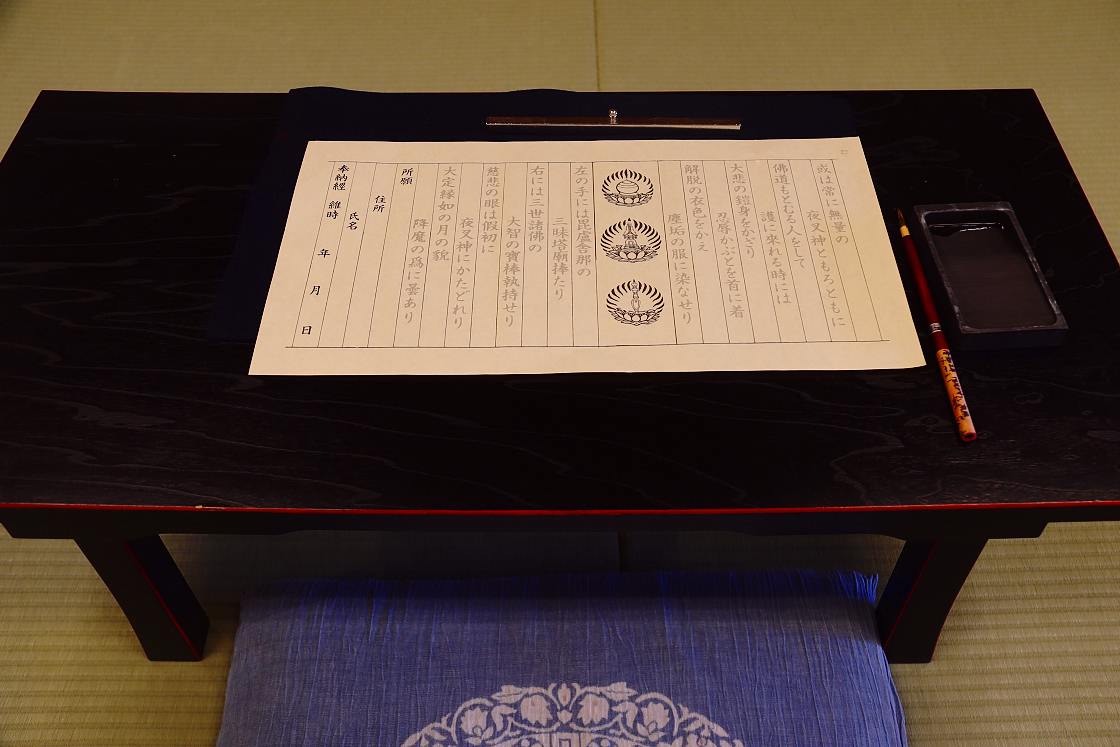
With the activity complete, it was time for a visit to the shared baths and dinner – a beautifully presented course of traditional Buddhist cuisine, known as shojin ryori. With techniques imported from China in the 13th century, shojin ryori follows Buddhist tradition by substituting meat and fish with tofu, and strong-tasting ingredients like garlic and onion for mountain herbs and vegetables.
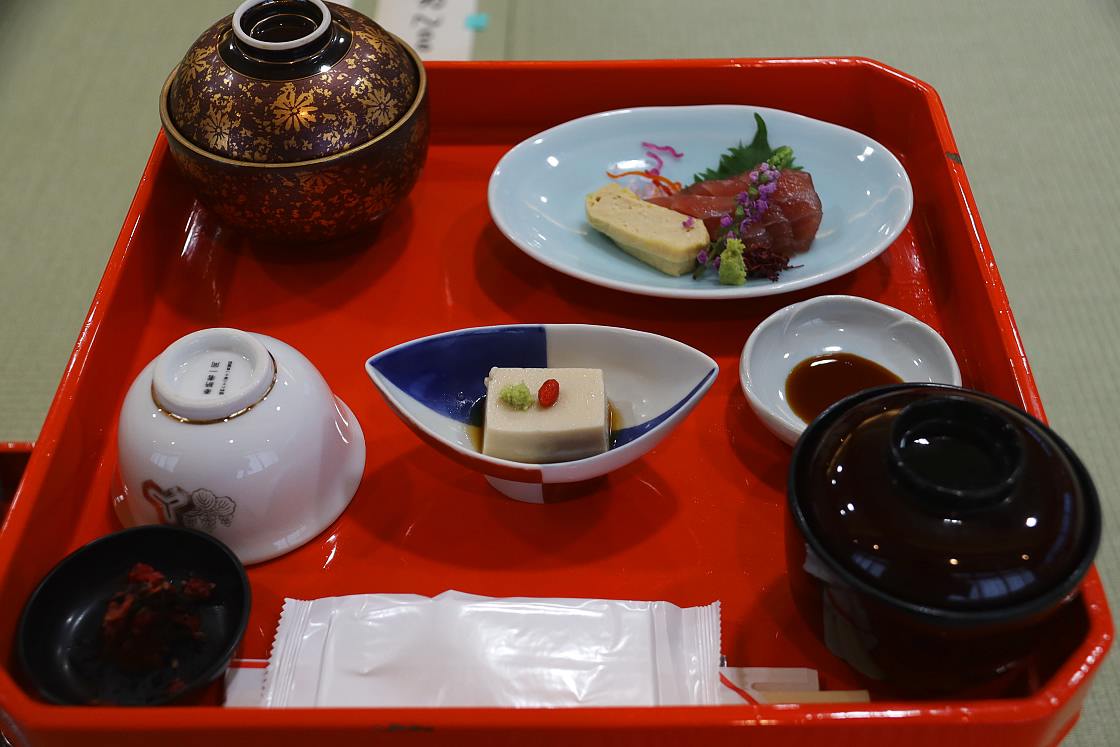
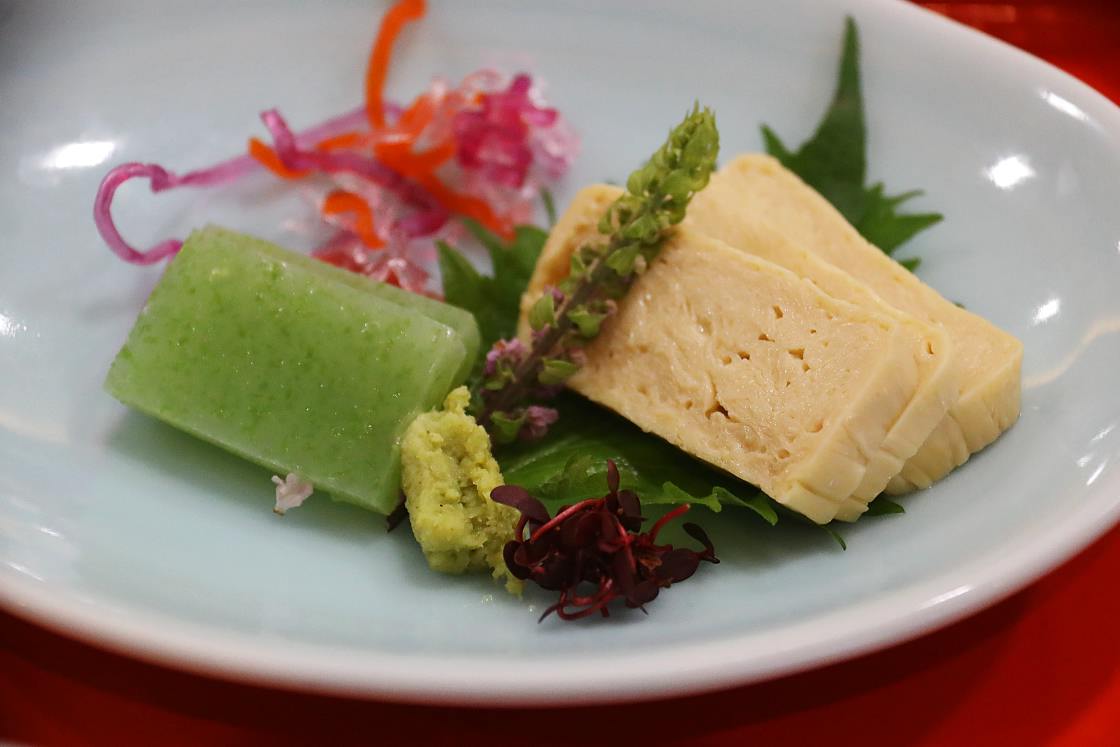
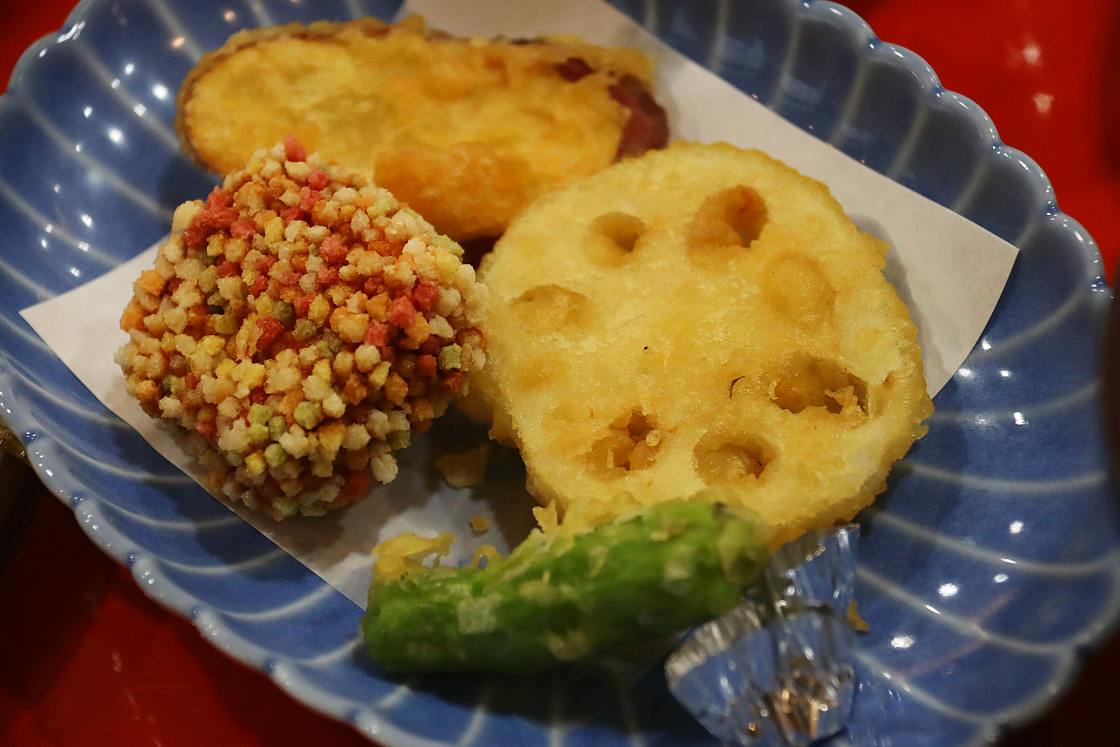
Keen to soak up more of Shigisan’s atmosphere, after finishing my dinner I set out once again to explore the temple grounds after dark. With the pathways and buildings now illuminated by lamplight and the twinkling of the urban sprawl distantly from the foot of the mountain, the complex had an entirely different feel, and apart from the occasional other late night stroller and the quiet chirring of insects, was blissfully silent.
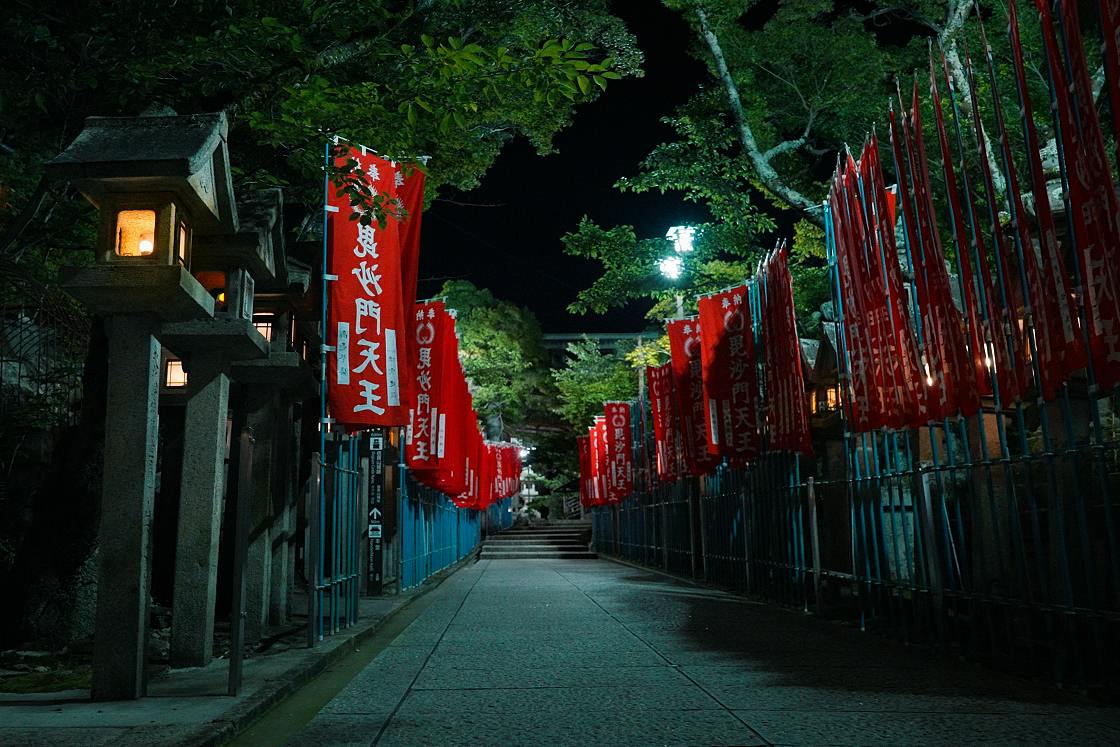
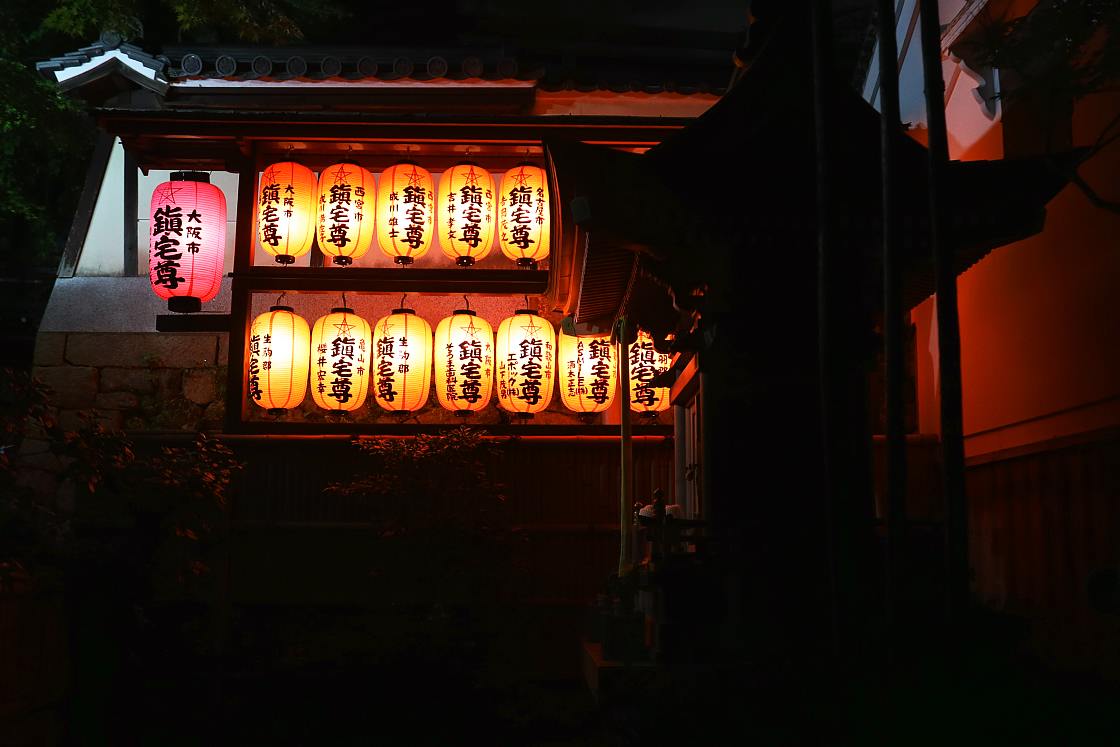
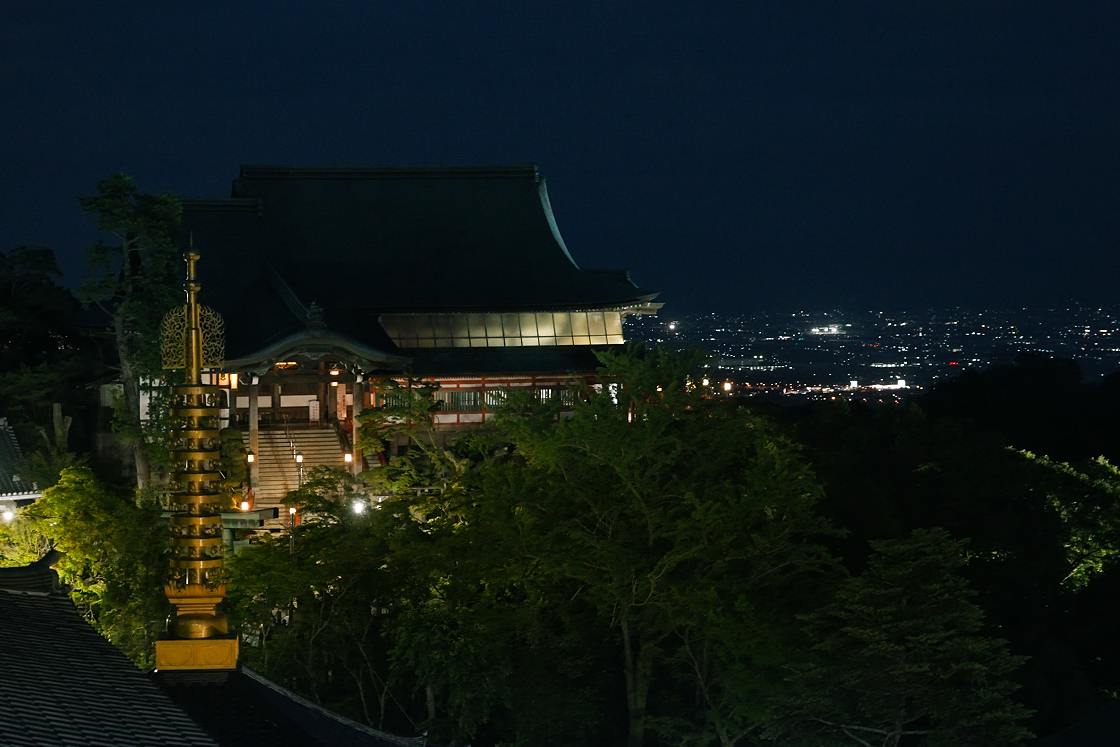
Waking up a little before dawn the next morning, I made my way along with a few other temple guests to a special pavilion called the Yokuyodo, to witness a fascinating and deeply atmospheric practice known as gomagyo or the fire ritual. Squeezing into the little hall, we watched as a senior priest carefully placed a stack of slim wooden sticks, each bearing a single written wish, while a second priest chanted the characters from an open sutra.
Amid a series of ritual gestures, the senior priest finally lit the fire, which crackled with drops of sacred oil and scattered pine needles. As the flames climbed higher and higher sending streams of black smoke up to the rafters, the chanting built to a crescendo that was somehow affecting and powerfully cathartic.
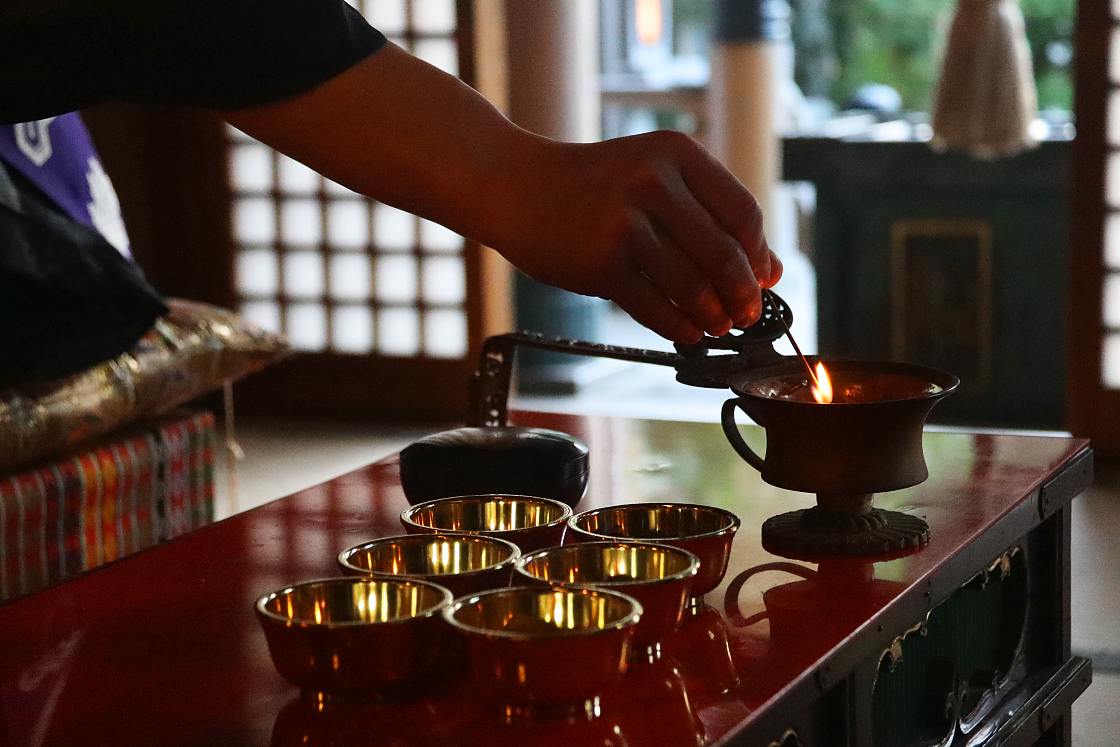
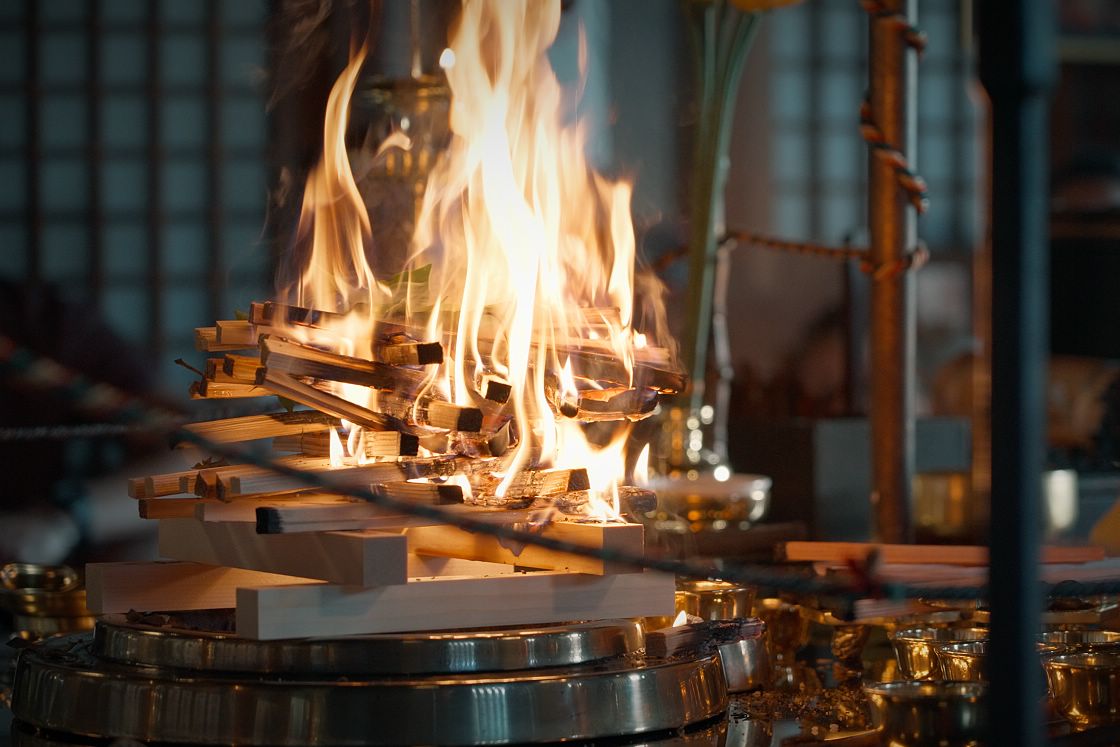
As the sun rose over the peaks, I made my way back inside for a traditional breakfast of salad, tofu, omelet and pickles served with rice and miso soup. At last, it was time to say my goodbyes and retrace my steps back into central Osaka, feeling refreshed and grateful for my short break in this very different world.
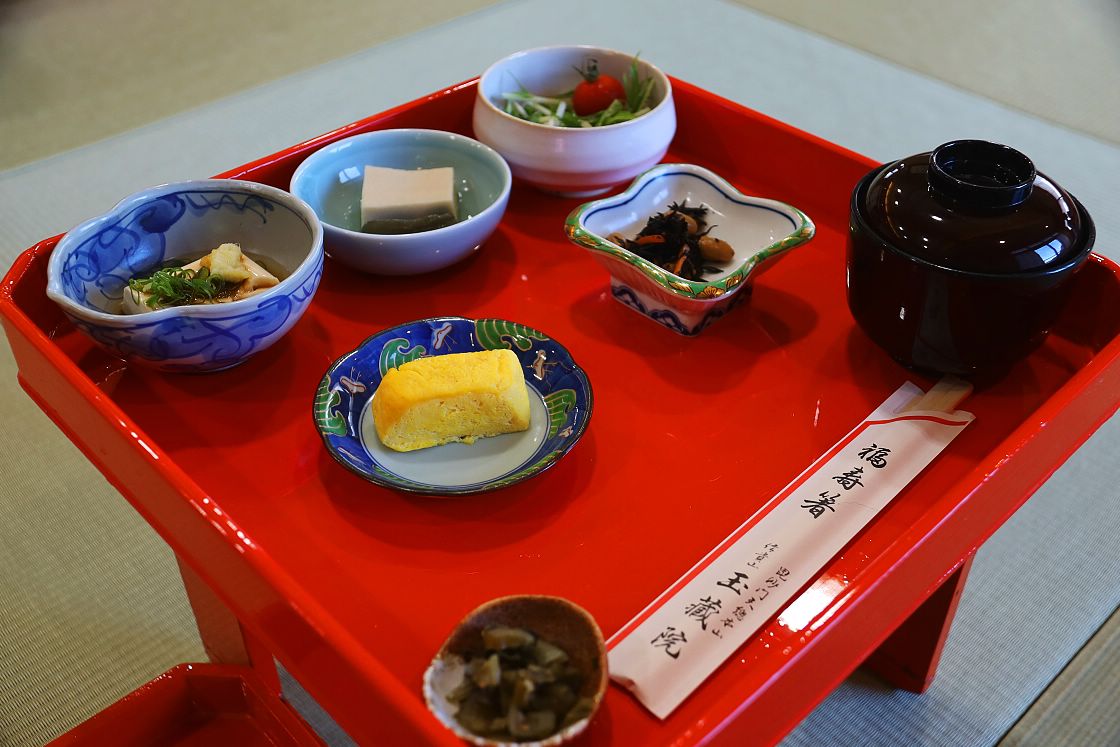
Looking back on my visit, I felt that Shigisan distinguished itself from some of the better known shukubo or temple stay destinations in a number of ways: guestrooms at Gyokuzoin were comfortable yet spartan, setting the right mood for rest, reflection or simply enjoying the quiet perhaps best of all though, every one of the staff I happened to meet, from caretakers to senior priests, were wonderfully warm and hospitable, while the handful of other guests I spoke to felt relaxed and well-cared-for, even with the generally limited level of spoken English. For all of these reasons, I think Shigisan should be one of the first options to consider for those planning their own off-the-beaten track shukubo experience.
